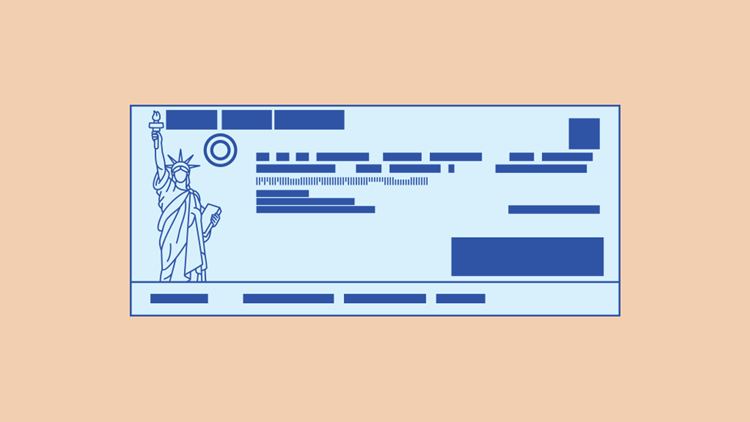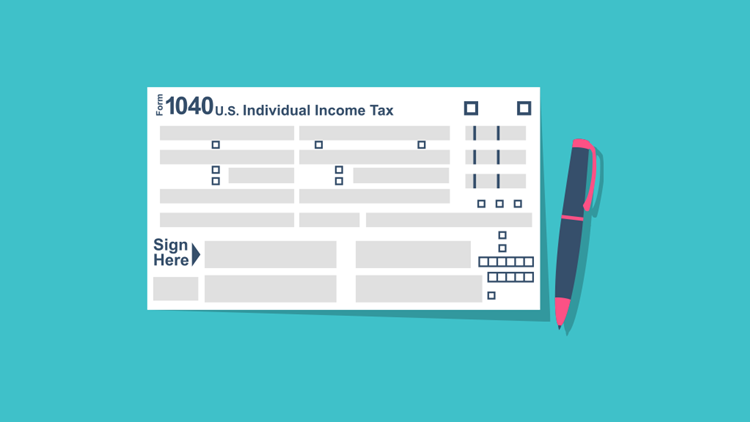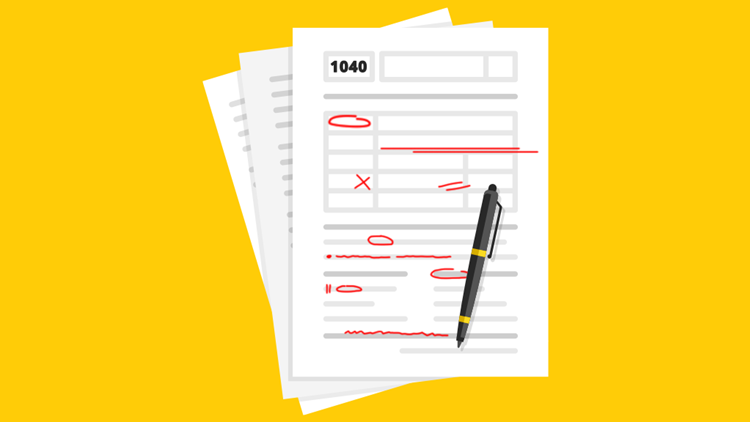by Socheata Ten EA, LLC | Jan 29, 2022 | Tax Tips and News
We’ve only had one week of filing season, and scammers are already trying to make life miserable for everyone else. While this isn’t a shocking turn for anyone who has been paying attention to the evolution of identity theft tax refund fraud, it’s a problem that everyone needs to be aware of nonetheless.
This week, the Internal Revenue Service is warning that identity thieves are posing as IRS agents in a wide range of scam phone calls. According to the agency, criminals are “posing as IRS agents in hopes of stealing taxpayer money or personal information.”
How will I know if a phone call from “the IRS” is actually a scam?
Identity thieves generally try to create a sense of urgency when they contact you. Their strategy is to put you in a state of fear or anxiety through threats or by offering deals that sound too good to be true. If these criminals set the hook, you might not realize it’s a scam until it’s too late. That’s why you and your clients must become familiar with the common types of bait in the phishing tackle box.
The IRS lists four things their agents will never do when contacting taxpayers:
- Call to demand immediate payment using a specific payment method such as a prepaid debit card, gift card, or wire transfer. Generally, the IRS will first mail a bill to any taxpayer who owes taxes. Threaten to immediately bring in local police or other law enforcement groups to have the taxpayer arrested for not paying.
- Demand that taxes be paid without giving taxpayers the opportunity to question or appeal the amount owed.
- Call unexpectedly about a tax refund.
While specifically cited concerning phishing calls, these tactics are also common in phishing emails and social media scams.
What should I do if I receive a tax-related scam phone call?
If you or a client receives one of these phone calls, the IRS says step one is to write down the number and hang up. Remember, some fraudsters use what you say during one of these calls to start building a profile that they refine for future scams—in other words, do not try to emulate that TED Talk. (Though watching it is admittedly a fun way to spend ten minutes!)
Next, the agency says to report the phone call to the Treasury Inspector General for Tax Administration (TIGTA) and the IRS. That involves contacting TIGTA through their “Report a Crime or IRS Employee Misconduct” page or calling 800.366.4484, then sending an email containing the suspicious phone number—subject: “IRS Phone Scam”—to [email protected].
The IRS closes their Tax Tip with links to two important tax-related scam resources:
Also, be sure to check out the “Security Summit” page on IRS.gov.
Source: Tax Tip 2022-15
– Story provided by TaxingSubjects.com
by Socheata Ten EA, LLC | Jan 27, 2022 | Tax Tips and News
The Internal Revenue Service says it has sent out all the third-round Economic Impact Payments (EIPs), but the agency is quick to add that taxpayers who missed out on the EIP still have one more chance to claim their money.
These individuals will have to file a 2021 income tax return and claim the Recovery Rebate Credit in order to collect.
Why these individuals didn’t take advantage of the third Economic Impact Payments can vary. Maybe they just waited too long to go online and register for the EIP. Or perhaps they had a child born in 2021 who came into the world too late to qualify for the credit.
By claiming the Recovery Rebate Credit on their tax return, these parents can receive up to $1,400 for their new child.
Some EIPs are still in the process of being delivered, but the IRS is done issuing any of the three Economic Impact Payments.
As of the end of 2021, the IRS had issued more than 175 million third-round EIPs, totaling over $400 billion to individuals and families across the U.S.
In January, the IRS started sending out Letter 6475, Your Third Economic Impact Payment, to those who received the third-round EIP. The letter was designed to help EIP recipients determine if they’re entitled to claim the Recovery Rebate Credit, and if so, how to claim it.
Who can still claim the Recovery Rebate Credit?
The third-round Economic Impact Payment was basically an advance payment of the Recovery Rebate Credit for the 2021 tax year, based on the taxpayer’s income and number of dependents they listed on their 2019 or 2020 income tax return.
The 2021 Recovery Rebate Credit, however, is based on income and the number of dependents listed on the filer’s 2021 income tax return.
A number of scenarios could be responsible for an individual missing out on an Economic Impact Payment. Many times, it could be as simple as circumstances changing in 2021 from what they were in 2020.
Here are a few examples of people who may be eligible to get more money by claiming the Recovery Rebate Credit on their income tax return. Be aware, however, there could be others not listed here:
- Parents of a child born in 2021 who claim the child as a dependent on their 2021 income tax return may be eligible to receive a 2021 Recovery Rebate Credit of up to $1,400 for this child.
- All eligible parents of qualifying children born or welcomed through adoption or foster care in 2021 are also encouraged to claim the child tax credit — worth up to $3,600 per child born in 2021 — on their 2021 income tax return.
- Families who added a dependent – such as a parent, a nephew or niece, or a grandchild – on their 2021 income tax return who was not listed as a dependent on their 2020 income tax return may be eligible to receive a 2021 Recovery Rebate Credit of up to $1,400 for this dependent.
- Single filers who had incomes above $80,000 in 2020 but less than this amount in 2021; married couples who filed a joint return and had incomes above $160,000 in 2020 but less than this amount in 2021; and head of household filers who had incomes above $120,000 in 2020 but less than this amount in 2021 may be eligible for a 2021 Recovery Rebate Credit of up to $1,400 per person.
- Single filers who had incomes between $75,000 and $80,000 in 2020 but had lower incomes in 2021; married couples who filed a joint return and had incomes between $150,000 and $160,000 in 2020 but had lower incomes in 2021; and head of household filers who had incomes between $112,500 and $120,000 in 2020 but had lower incomes in 2021 may be eligible for a 2021 Recovery Rebate Credit.
The Recovery Rebate Credit can also be used to receive any part of the first two Economic Impact Payments the filer may have missed. If the filer didn’t get the full amount of the EIPs, or missed a payment altogether, they would need to claim the Recovery Rebate Credit on their 2020 income tax return – or to file an amended return if it’s already been processed.
Claiming the 2021 Recovery Rebate Credit
Before actually claiming the Recovery Rebate Credit, filers need to make sure they have all the documentation necessary to file an accurate return. Filing a correct return will help to avoid delays in processing and will hold up any refund payment.
Once they’re ready to file, would-be filers need to know the total amount of their third-round EIP. This amount should include any “Plus-Up” payments they received.
The IRS sent out “Plus-Up” payments to those who received a third-round Economic Impact Payment based on their 2019 tax return and were eligible for a larger amount according to updated information on their 2020 return.
Be aware that the IRS Get My Payment application will shut down at the end of January. Instead, taxpayers are urged to use their Online Account to access their EIP information.
Letter 6475 from the IRS will also have this information, although some taxpayers may not get their letter until sometime in March.
Married taxpayers filing a joint return with their spouse should remember that each spouse will have to log into their own Online Account or look over their own letter for their part of the couple’s total payment.
For the fastest refund, e-file
The same options that speed up processing of income tax returns apply for speeding up the Recovery Rebate Credit: e-file, file an accurate return and choose direct deposit for any refund.
A trusted tax professional can help their clients with all three.
The 2021 Recovery Rebate Credit will first reduce the tax due for qualified taxpayers, with the remainder added to any refund they may have. The refund of the credit will be paid along with the tax refund, so it won’t be sent out separately.
The third round of Economic Impact Payments was authorized by the American Rescue Plan Act of 2021, signed into law in March. The IRS started sending out the EIPs on March 12, 2021, and continued through the end of the year.
Source: IR-2022-19
– Story provided by TaxingSubjects.com
by Socheata Ten EA, LLC | Jan 26, 2022 | Tax Tips and News
Much attention has been given lately to the Child Tax Credit and its advance payments. But another credit is available if the taxpayer’s dependents aren’t their children.
This credit is for other dependents other than children. Unlike the Child Tax Credit, the credit for other dependents is non-refundable, meaning it can reduce or even eliminate a taxpayer’s tax bill, but can’t be refunded if part of the credit amount is left over.

What dependents qualify?
The IRS limits the maximum amount for each qualifying dependent at $500, and they must fall under one of the following categories:
- Dependents who are age 17 or older.
- Dependents who have individual taxpayer identification numbers.
- Dependent parents or other qualifying relatives supported by the taxpayer.
- Dependents living with the taxpayer who aren’t related to the taxpayer.
The credit for other dependents phases out when the taxpayer’s income is more than $200,000. For married couples filing jointly, the phaseout starts at $400,000.
Which taxpayers can claim the credit?
Taxpayers can claim the credit for other dependents if:
- They claim the person as a dependent on the taxpayer’s return.
- They cannot use the dependent to claim the child tax credit or additional child tax credit.
- The dependent is a U.S. citizen, national or resident alien.
Depending on the circumstances, a taxpayer might be able to claim the child and dependent care credit and the earned income credit along with the credit for other dependents, all on the same return.
The IRS website, IRS.gov, has helpful resources that can point a taxpayer in the right direction on claiming the credit for other dependents. These include the IRS Interactive Tax Assistant and the “Does My Child/Dependent Qualify for the Child Tax Credit or the Credit for Other Dependents?” webpage.
In addition, see Publication 501, Dependents, Standard Deduction and Filing Information.
Source: Tax Tip 2022-12
– Story provided by TaxingSubjects.com
by Socheata Ten EA, LLC | Jan 25, 2022 | Tax Tips and News
It’s official: the gates are open; the race is on. Tax season for 2022 is officially underway.
The IRS kicked off this year’s filing season urging taxpayers to help them get refunds out faster this year by not filing paper tax returns and instead filing electronically.
Last year, tax season didn’t get started until February 12. But the IRS will still need all the extra time it can get; the agency expects more than 160 million income tax returns to be filed for the 2021 tax year—most of them before the April deadline.

For most taxpayers, this year’s deadline is April 18. Because Washington, D.C., Massachusetts and Maine all have state holidays on the traditional deadline day of April 15, this year’s deadline to file and pay tax due is April 19 in Massachusetts and Maine and April 18 everywhere else.
Victims of federally declared disasters may have later deadlines in various locations.
There were several critical changes in the tax law that took effect in 2021, and with the ongoing challenges posed by the pandemic, IRS Commissioner Chuck Rettig says taxpayers should pay extra attention to the process of filling out their income tax returns.
“IRS employees are working hard to deliver a successful 2022 tax season while facing enormous challenges related to the pandemic,” Rettig said. “There are important steps people can take to ensure they avoid processing delays and get their tax refund as quickly as possible. We urge people to carefully review their taxes for accuracy before filing. And they should file electronically with direct deposit if at all possible; filing a paper tax return this year means an extended refund delay.”
The best-case scenario for the IRS is to get an electronically filed tax return with no math errors or other issues. When those conditions are met, the IRS estimates it can have the refund ready within 21 days of being filed, provided the taxpayer chose direct deposit.
Last year, the average refund was more than $2,800.
“There are simple steps that people can take that will help them navigate this challenging tax season,” Rettig said. “Filing electronically and using online resources instead of calling are just some of the steps that can help people avoid delays.”
“IRS employees will do everything possible with the available resources to serve taxpayers this year,” Rettig said. “We will work hard to deliver refunds quickly, serve as many people as possible and work to catch up on past tax returns affected by the pandemic. The IRS thanks you for filing your taxes, a critical part of helping our great nation.”
IRS Tips for Faster Refunds
Let’s face it: when the IRS has problems, taxpayers have problems. And if things go smoothly for the IRS, likewise they’ll likely go well for the taxpayer. So here are a few areas where the taxpayer can actually make a difference in how quickly—or slowly—they get their refund.
E-file and avoid paper returns: The IRS is still processing problem paper returns from last tax season, so adding another paper return to the pile is counterproductive for a quick refund. As we mentioned, file electronically and choose direct deposit to avoid a paper return and a long-delayed refund. Best bets for speed: a trusted tax professional for filing correctly and quickly or tax software for speed and convenience.
Extra care for EIP and advance Child Tax Credit Recipients: The IRS says people who received a third Economic Impact Payment (EIP) or advance Child Tax Credit in 2021 should use extra caution when filling out their income taxes. Taxpayers should take their time to make sure the amounts they received during the course of the tax year are entered correctly on the return. An incorrect return—whether due to faulty figuring or incorrect entries—will have to be reviewed by an IRS staffer, taking valuable time and delaying any possible refund. Some help is on the way, though; the IRS is mailing special letters about the stimulus payments and advance Child Tax Credit payment amounts. Taxpayers can also use their Online Account on IRS.gov to find the amount of their payments.
Some refunds will be later than others: The IRS is barred by federal law from issuing those refunds that result from the Earned Income Tax Credit or the Additional Child Tax Credit before the middle of February. Even if a return claiming one of those credits is filed now, the refund will be held until it can be lawfully paid out. The extra time is provided to help the IRS verify the claims and stop fraudulent refunds.
Avoid phone delays; get help online: Demand for telephone support is estimated to be above last season’s record-breaking call totals, so avoid wait times and research questions on IRS.gov instead. Check the IRS website for refund information and answers to tax questions. Taxpayers can also clear up their questions by setting up an Online Account on IRS.gov., giving them quick access to their information.
The IRS is always open: Use IRS.gov to get answers to tax questions, to check a return status or pay a tax bill. No appointment needed and no wait time. The IRS’ online tools and other resources are available 24 hours a day.
Source: IR-2022-18
– Story provided by TaxingSubjects.com
by Socheata Ten EA, LLC | Jan 22, 2022 | Tax Tips and News
Millions of Americans are preparing to get their income tax returns in order for the 2021 tax year. While many are mostly concerned about getting their returns in on time, they should also be thinking about filing a correct return.
Most often, it’s the simple tax return errors that trip up taxpayers and delay refund checks. A lot of these errors are easy to prevent.
One great way to avoid errors is to use a reputable tax preparer, which can include certified public accountants, enrolled agents, or other tax pros.
To help simplify the tax-time filing experience, here’s a quick list of some tax-return errors from the IRS:
- Filing too early. While taxpayers should not file late, they also should not file prematurely. People who don’t wait to file before they receive all the proper tax reporting documents risk making a mistake that may lead to a processing delay.
- Missing or inaccurate Social Security numbers (SSN). Each SSN on a tax return should appear exactly as printed on the Social Security card.
- Misspelled names. Likewise, a name listed on a tax return should match the name on that person’s Social Security card.
- Entering information inaccurately. Wages, dividends, bank interest, and other income received and that was reported on an information return should be entered carefully. This includes any information needed to calculated credits and deductions. Using tax software should help prevent math errors, but individuals should always review their tax return for accuracy.
- Incorrect filing status. Some taxpayers choose the wrong filing status. The Interactive Tax Assistant on IRS.gov can help taxpayers choose the correct status especially if more than one filing status applies. Tax software also helps prevent mistakes with filing status.
- Math mistakes. Math errors are some of the most common mistakes. They range from simple addition and subtraction to more complex calculations. Taxpayers should always double check their math. Better yet, tax prep software does it automatically.
- Figuring credits or deductions. Taxpayers can make mistakes figuring things like their Earned Income Tax Credit, Child and Dependent Care Credit, Child Tax Credit, and Recovery Rebate Credit. The Interactive Tax Assistant can help determine if a taxpayer is eligible for tax credits or deductions. Tax software will calculate these credits and deductions and include any required forms and schedules. Taxpayers should Double check where items appear on the final return before clicking the submit button.
- Incorrect bank account numbers. Taxpayers who are due a refund should choose direct deposit. This is the fastest way for a taxpayer to get their money. However, taxpayers need to make sure they use the correct routing and account numbers on their tax return.
- Unsigned forms. An unsigned tax return isn’t valid. In most cases, both spouses must sign a joint return. Exceptions may apply for members of the armed forces or other taxpayers who have a valid power of attorney. Taxpayers can avoid this error by filing their return electronically and digitally signing it before sending it to the IRS.
To keep the wheels of processing rolling smoothly, the IRS urges taxpayers to file electronically and use direct deposit for any refund. Following our plan for avoiding return filing mistakes can help ensure there aren’t any other delays to worry about.
Source: COVID Tax Tip 2022-11
– Story provided by TaxingSubjects.com








 Socheata Ten EA, LLC
Socheata Ten EA, LLC